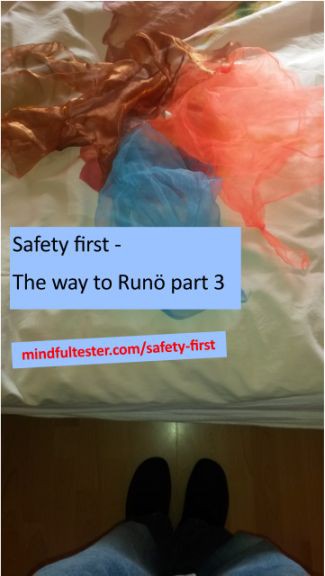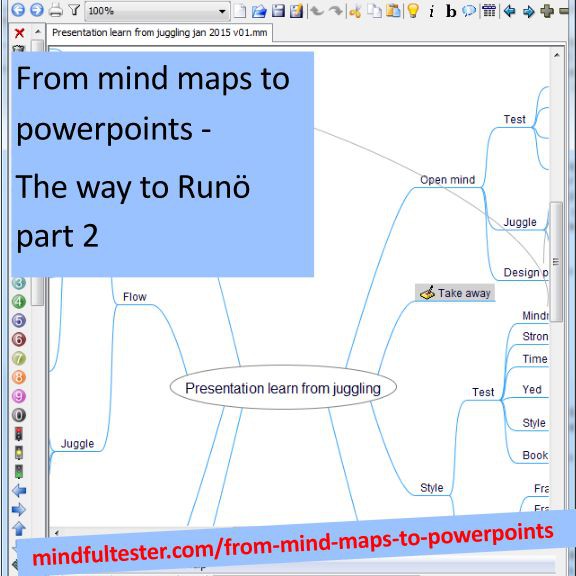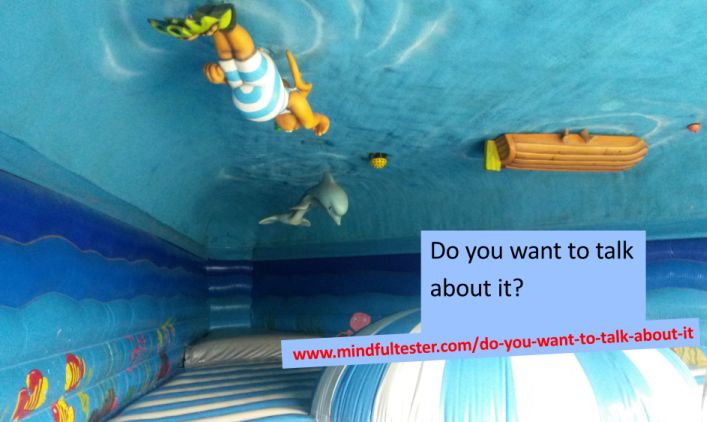When I started juggling, I juggled above my bed. This had some advantages: my juggling props did not break fast and my neighbours downstairs did not complain about the drops. Unconsciously I created a safe environment. An environment, where no one laughed, when I dropped a ball. An environment, where no one ridiculed me, when I let my juggling balls collide against each other .
Open session
One of the finest tools for review is Skype. For my repetitions of my presentation it was great. I could show my PowerPoint to my reviewer. At the same time I could see the reactions on the face. The tool enabled me to observe the reviewer struggling with a small exercise program, which I especially wrote for my workshop.
The first session was horrible. In the second half I had to force myself to finish the story. There were too many slides. It hurt me, that I had to cut them out of presentation. One exercise was so big, that it would cost me at least a half hour to execute it properly. Too big to be included.
Nevertheless I got the compliment, that it was a personal story. Particulary the part about the safe environment was good:
What do you think, what safe environment looks like? What are the characteristics of a safe environment? (Silence of 2 seconds) For me it is an environment, where I can make errors.
The second session went more smoothly than the first one. I had been able to reduce the number of sheets. The feedback was: “This is you”.
Once I talked with a delegate about the experiences of events of TestNet, the Dutch Special Interest Group in Software Testing. The answer was, that the test knowledge was not that important. I was surprised: there was so much knowledge and experience in the Congress Centre, The delegate must have noticed my astonishment and explained to me, that it was a big comfort, that other testers were having the same problems. Somehow this peer conference provided a safe environment to exchange experiences.
Time 2 Juggle
In my abstract I stated, that live juggling will be included in my workshop. But for me it had been a while ago, that I performed for an audience. So it was time to practice the juggling tricks. You might wonder where. Above the bed in my bedroom :)
The next step was to juggle, where people would notice me juggling. Preferably a group people with a technical background. So I chose my colleagues, who were having lunch on a bench in the sun. And eager testers at Tasting Let’s Test in Breda.
In 2008 my family went to the European Juggling Convention in Karlsruhe. More than two thousand people gathered in this place to share the joy of juggling. It was the first time, that my wife went to an European Juggling Convention. She was familiar with the Dutch Juggling Convention, so she considered the European one a safe place. Families with little children were camping on the convention site. There was a relaxed atmosphere.
Exercising the exercises
I love to play games. Therefore I consider exercises as small games. There is a set rules and the players have to figure out a way to win it. So I talked about the exercises with a family member, who is a teacher. I let a colleague wrestle with a program. For good measures I let my small Dutch kids explore an English program and they loved it.
So
I increased my zone of comfort in the last months. By talking, by playing, and by being in a safe environment.
BTW if you are interested to attend my workshop What I learned from juggling as a tester? at Let’s Test 2015, it would be great, when you bring juggling balls, clubs, and other interesting juggling props with you. Maybe you know a friend or colleague, who juggles or juggled. You might lend some juggling gadgets for the duration of the conference.


